19 Types of Ducks: Facts and Photos
Discovered in the picturesque landscapes of Sweden in the 19th century, the Swedish Blue Duck has adapted to various climates. These domestic ducks have a colorful appearance and hardy nature, which appeal to hobbyists and small-scale farmers. Moreover, this duck weighs six to eight pounds, much heavier than others. Yet, they are calm and friendly, a favorite among novice duck breeders.
All Types of Duck Species from around the world

This page contains over 100 types of Duck Species from around the world. The pictures are useful for quickly identifying an unknown duck. These ducks are also grouped under the following:- Dabbling Ducks, Diving Ducks, Perching Ducks, Stiff-tail Ducks, Sea Ducks, Shelducks, and Whistling Ducks.
Click on the Duck photographs to enlarge them or if you click on the Duck’s name then it will take you to another page with information, more photos, and sometimes a video of that particular Duck.
 African Black Duck (Anas Sparsa) Photo: Dave Key |
 American Black Duck (Anas Rubripes) Photo: Nigel Key |
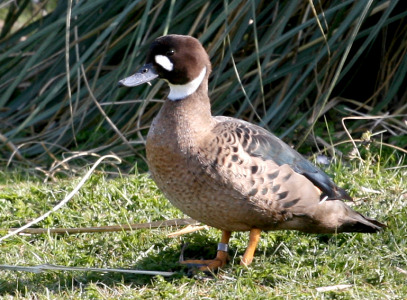 Bronze-winged Duck (Speculanas Specularis) Photo: Dave Key |
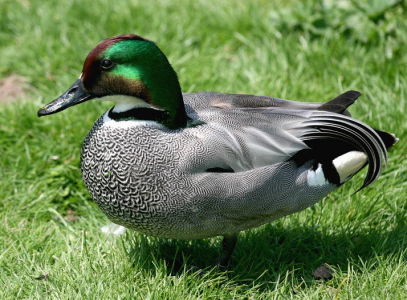 Falcated Duck (Anas Falcata) Photo: Dave Key |
 Gadwall (Anas Strepera) Photo: Dave Key |
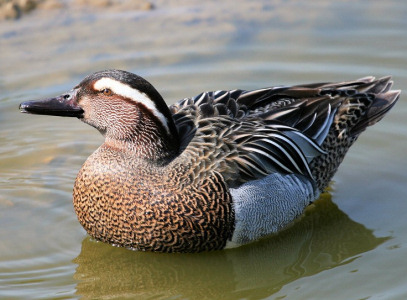 Garganey (Anas Querquedula) Photo: Dave Key |
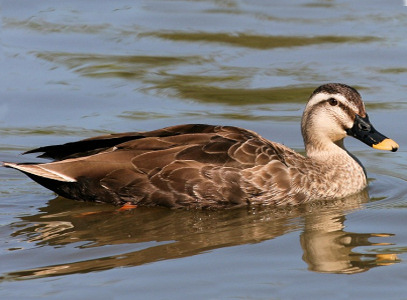 Spot-billed Duck (Anas Poecilorhyncha) Photo: Dave Key |
 Laysan Duck (Anas Laysanensis) Photo: Nigel Key |
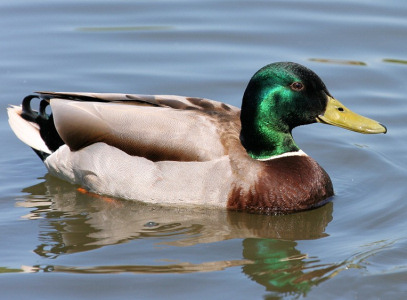 Mallard (Anas Platyrhynchos) Photo: Dave Key |
 Mottled Duck (Anas Fulvigula) Photo: Wikimedia Commons |
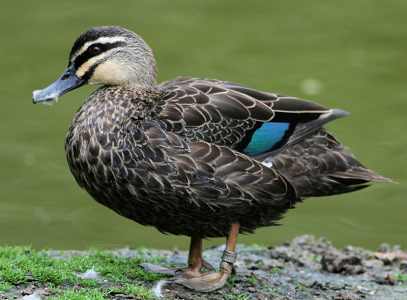 Pacific Black Duck (Anas Superciliosa) Photo: Dave Key |
Philippine Duck (Anas Luzonica) Photo: Dave Key |
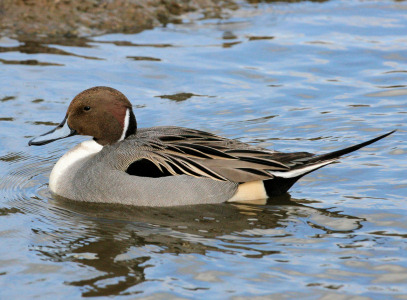 Northern Pintail (Anas Laysanensis) Photo: Dave Key |
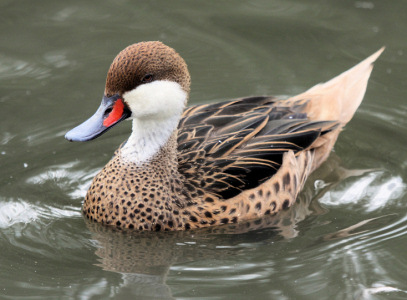 White-cheeked Pintail (Anas Bahamensis) Photo: Nigel Key |
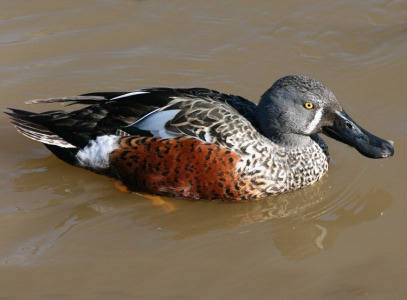 Australian Shoveler (Anas Rhynchotis) Photo: Dave Key |
 Cape Shoveler (Anas Smithii) photo by Neill Smith |
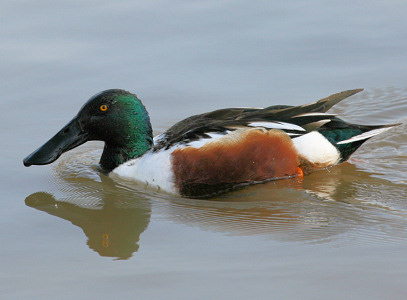 Northern Shoveler (Anas Clypeata) Photo: Dave Key |
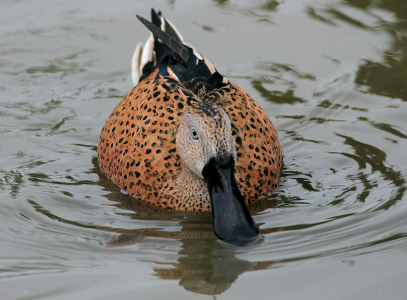 Red Shoveler (Anas Platalea) Photo: Dave Key |
 Brown Teal (Anas Chlorotis) Photo: Wikimedia Commons |
 Baikal Teal (Anas Formosa) Photo: Dave Key |
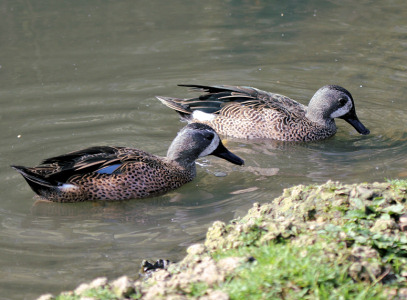 Blue-winged Teal (Anas Discors) Photo: Nigel Key |
 Cape Teal (Anas Capensis) Photo: Dave Key |
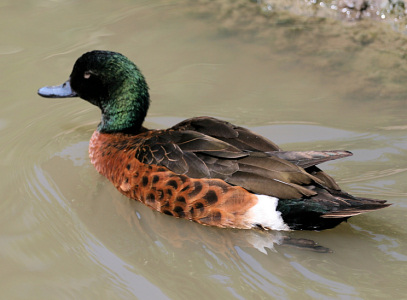 Chestnut Teal (Anas Castanea) Photo: Nigel Key |
 Cinnamon Teal (Anas Cyanoptera) Photo: Dave Key |
 Grey Teal (Anas Gracilis) Photo: Wikimedia Commons |
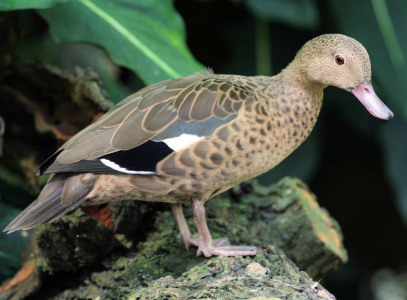 Bernier’s Teal (Anas Bernieri) Photo: Dave Key |
 Red-billed Teal (Anas Erythrorhyncha) Photo: Dave Key |
 Silver Teal (Anas Versicolor) Photo: Wikimedia Commons |
 Hottentot Teal (Anas Hottentota) Photo: Wikimedia Commons |
 Puna Teal (Anas Puna) Photo: Dave Key |
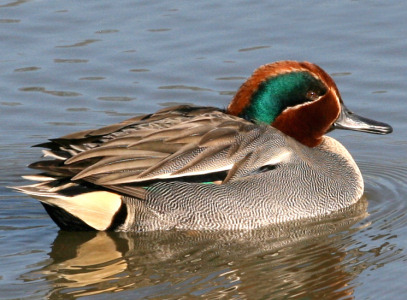 Eurasian Teal (Anas Crecca) Photo: Dave Key |
 Green-winged Teal (Anas Carolinensis) Photo: Wikimedia Commons |
 Sharp-winged Teal (Anas Flavirostris Oxyptera) Pic: Wikimedia Commons |
 American Wigeon (Anas Americana) Photo: Dave Key |
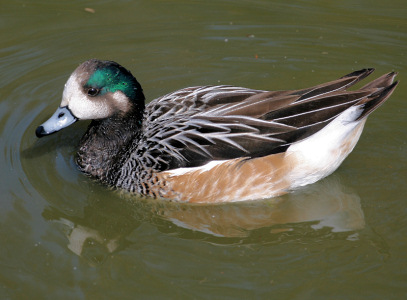 Chiloe Wigeon (Anas Sibilatrix) Photo: Dave Key |
 Eurasian Wigeon (Anas Penelope) Photo: Dave Key |
 Yellow-billed Duck (Anas Undulata) Photo: Dave Key |
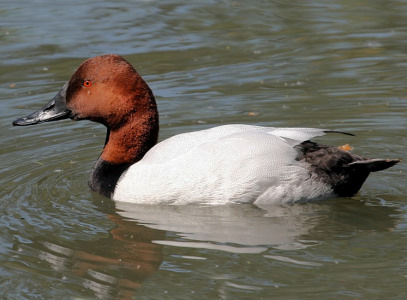 Canvasback (Aythya Valisineria) Photo: Dave Key |
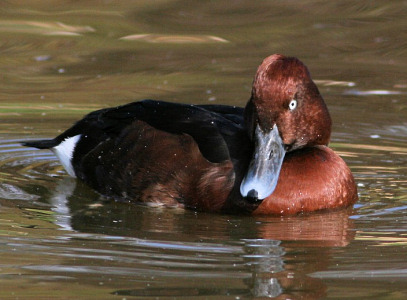 Ferruginous Duck (Aythya Nyroca) Photo: Dave Key |
 Hardhead (Aythya Australis) Photo: Dave Key |
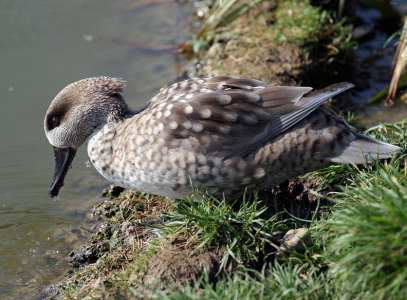 Marbled Duck (Marmaronetta Angustirostris) Photo: Dave Key |
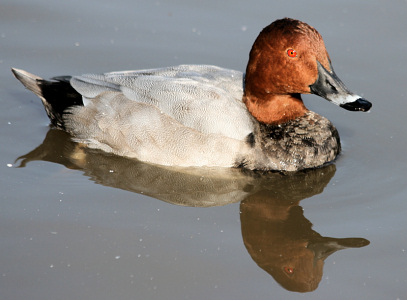 Common Pochard (Aythya Ferina) Photo: Nigel Key |
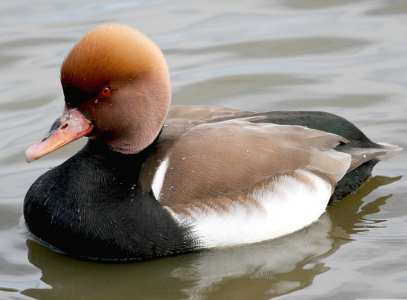 Red-crested Pochard (Netta Rufina) Photo: Dave Key |
 Southern Pochard (Netta Erythrophthalma) Photo: Dave Key |
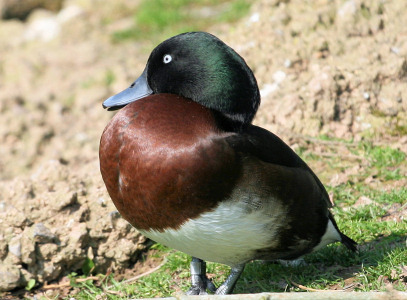 Baer’s Pochard (Aythya Baeri) Photo: Dave Key |
 Madagascar Pochard (Aythya Innotata) Photo: Wikimedia Commons |
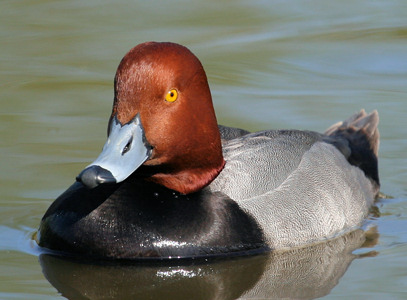 Redhead (Aythya Americana) Photo: Dave Key |
 Ring-necked Duck (Aythya Collaris) Photo: Dave Key |
 Rosybill (Vetta Peposaca) Photo: Dave Key |
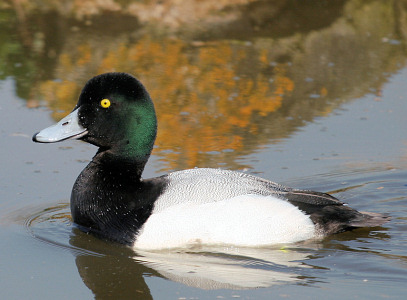 Greater Scaup (Aythya Marila) photo by Dave Key |
 Lesser Scaup (Aythya Affinis) Photo: Dave Key |
 New Zealand Scaup (Aythya Novaeseelandiae) Photo: Wikimedia Commons |
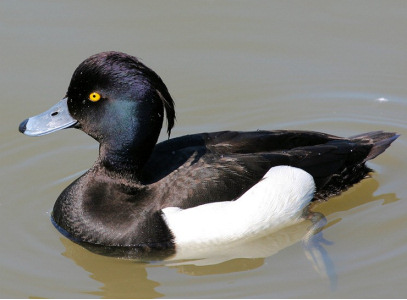 Tufted Duck (Aythya Fuligula) Photo: Dave Key |
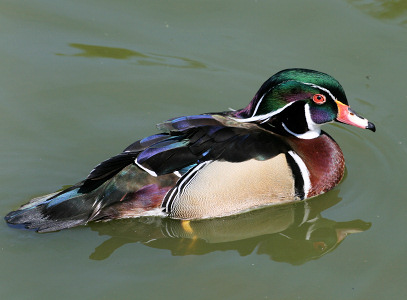 American Wood Duck (Aix Sponsa) Photo: Dave Key |
 Brazilian Duck (Amazonetta Brasiliensis) Photo: Dave Key |
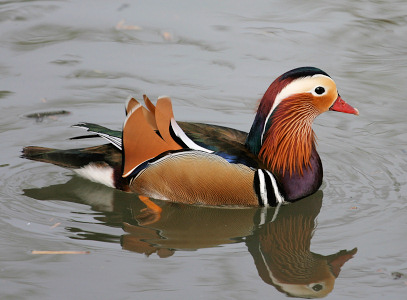 Mandarin (Aix Galericulata) Photo: Dave Key |
 Muscovy Duck (Cairina Moschata) Photo: Dave Key |
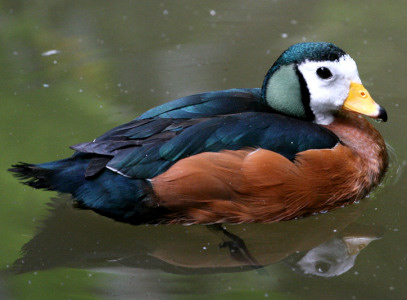 African Pygmy Goose (Nettapus Auritus) Photo: Dave Key |
 Cotton Pygmy Goose (Nettapus Coromandelianus) Photo: Wikimedia Commons |
 Green Pygmy Goose (Nettapus Pulchellus) Photo: gillian_in_brussels and Animal Photos! |
 Hartlaub’s Duck (Pteronetta Hartlaubii) Photo: Wikimedia Commons |
 Ringed Teal (Callonetta Leucophrys) Photo: Dave Key |
 Australian Wood Duck (Chenonetta Jubata) Photo: Dave Key |
 Comb Duck (Sarkidiornis Melanotos) Photo: Dave Key |
 Maccoa Duck (Oxyura Maccoa) Photo: Dave Key |
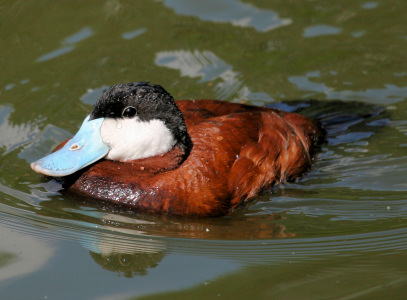 Ruddy Duck (Oxyura Jamaicensis) Photo: Dave Key |
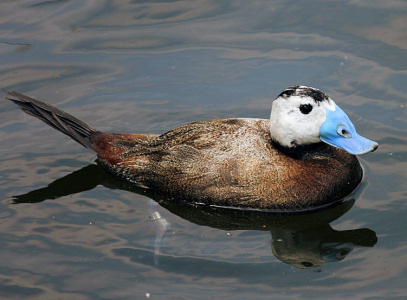 White-headed Duck (Oxyura Leucocephalia) Photo: Dave Key |
 Blue-billed Duck (Oxyura Australis) Photo: Wikimedia Commons |
 Lake Duck (Oxyura Vittata) Photo: Nigel Key |
 Musk Duck (Biziura Lobata) Photo: Wikimedia Commons |
 Bufflehead (Bucephala Albeola) Photo: Dave Key |
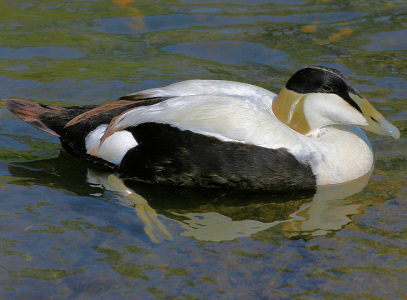 Common Eider (Somateria Mollissima) Photo: Dave Key |
 King Eider (Somateria Spectabilis) Photo: zaskoda and Animal Photos! |
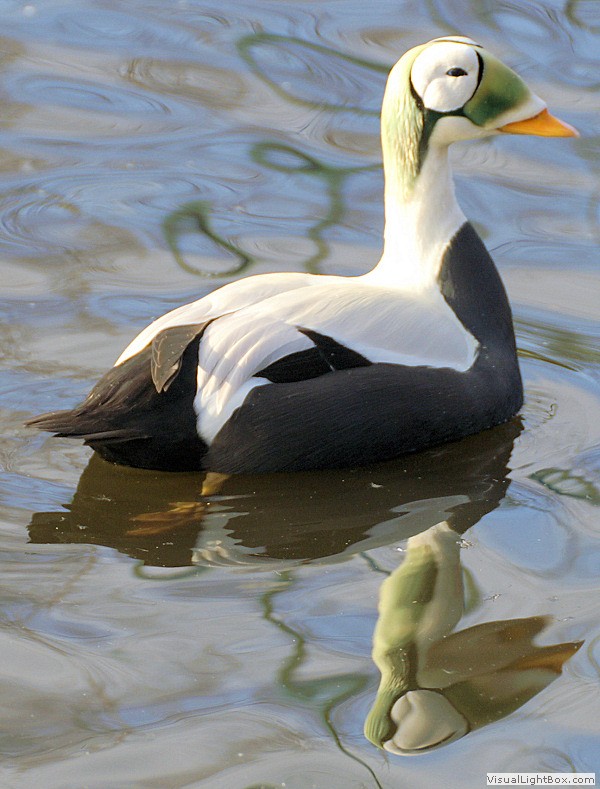 Spectacled Eider (Somateria Fischeri) Photo: Wikimedia Commons |
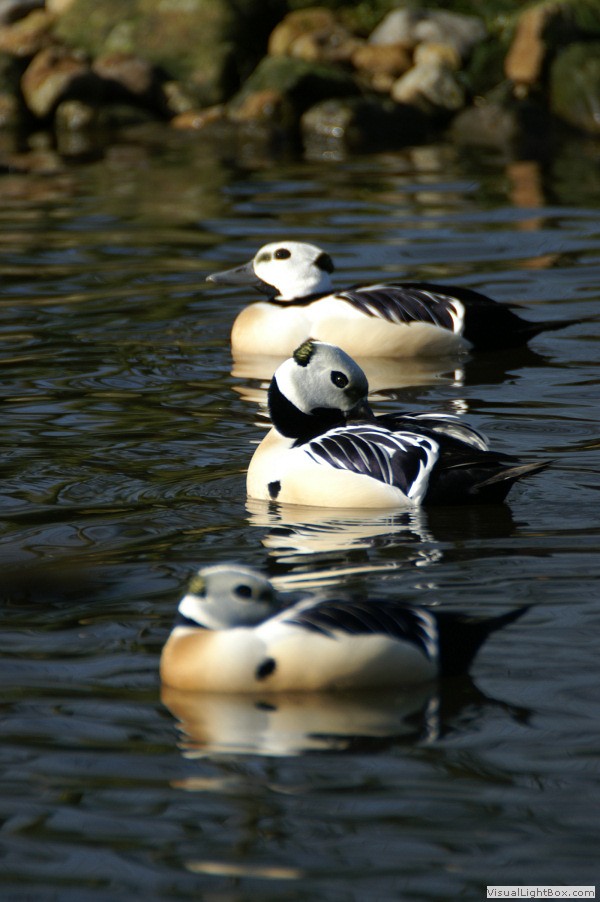 Steller’s Eider (Polysticta Stelleri) Photo: Wikimedia Commons |
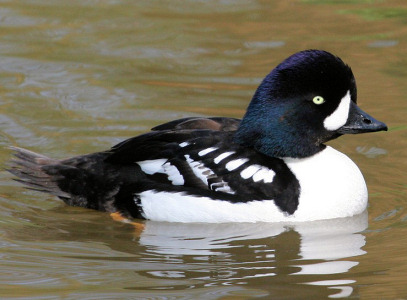 Barrow’s Goldeneye (Bucephala Islandica) Photo: Dave Key |
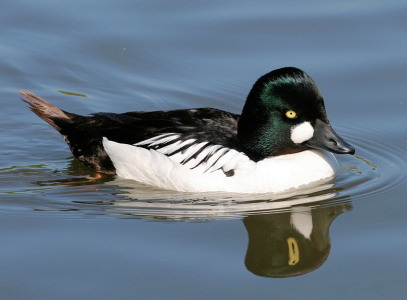 Common Goldeneye (Bucephala Clangula) Photo: Dave Key |
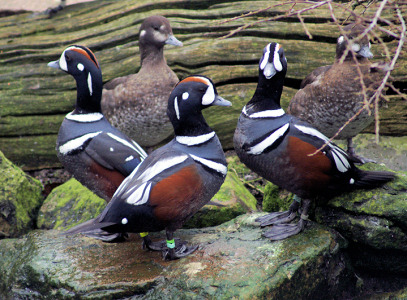 Harlequin Duck (Histrionicus Histrionicus) photo by Neill Smith |
 Long-tailed Duck (Clangula Hyemalis) photo by Neill Smith |
 Brazilian Merganser (Mergus Octosetaceus) Photo: Wikimedia Commons |
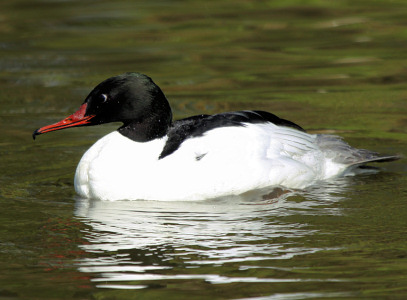 Common Merganser (Mergus Merganser) Photo: Nigel Key |
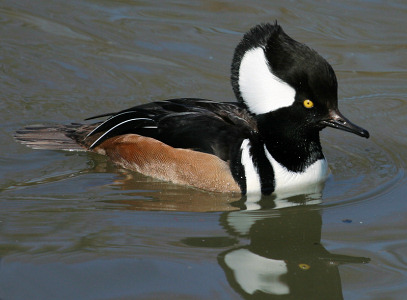 Hooded Merganser (Lophodytes Cucullatus) Photo: Dave Key |
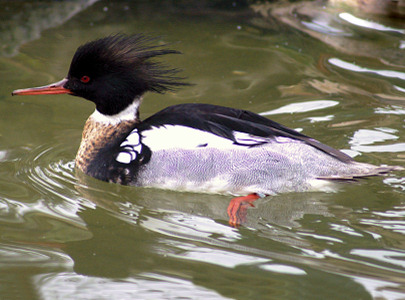 Red-breasted Merganser (Mergus Serrator) photo by Neill Smith |
 Scaly-sided Merganser (Mergus Squamatus) photo by Neill Smith |
 Black Scoter (Melanitta Americana) Photo: Wikimedia Commons |
 Common Scoter (Melanitta Nigra) photo by Neill Smith |
 Surf Scoter (Melanitta Perspicillata) Photo: mikebaird and Animal Photos! |
 Velvet Scoter (Melanitta Fusca) photo by Neill Smith |
 White-winged Scoter (Melanitta Deglandi) Photo: Wikimedia Commons |
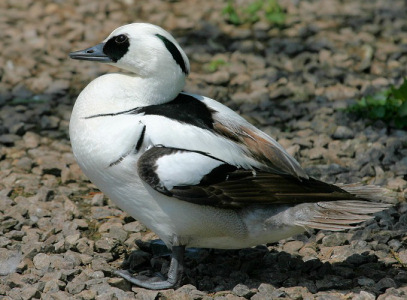 Smew (Mergellus Albellus) Photo: Dave Key |
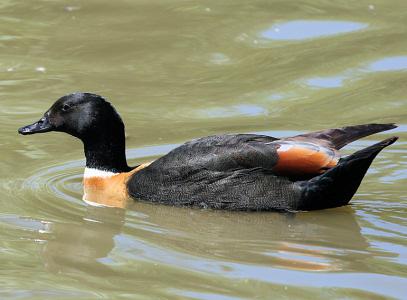 Australian Shelduck (Tadorna Tadornoides) Photo: Dave Key |
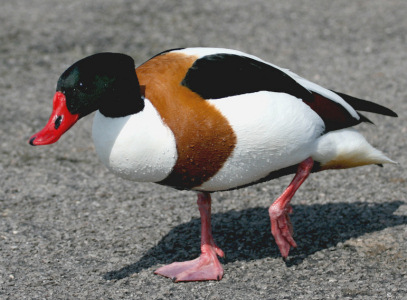 Common Shelduck (Tadorna Tadorna) Photo: Dave Key |
 Paradise Shelduck (Tadorna Variegata) Photo: digitaltrails and Animal Photos! |
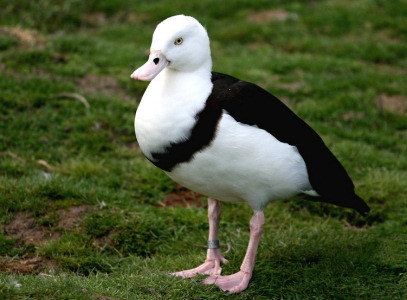 Radjah Shelduck (Tadorna Radjah) Photo: Dave Key |
 Ruddy Shelduck (Tadorna Ferruginea) Photo: Dave Key |
 South African Shelduck (Tadorna Cana) Photo: Dave Key |
 Black-bellied Whistling Duck (Dendrocygna Autumnalis) Photo: Dave Key |
 Fulvous Whistling Duck (Dendrocygna Bicolor) Photo: Dave Key |
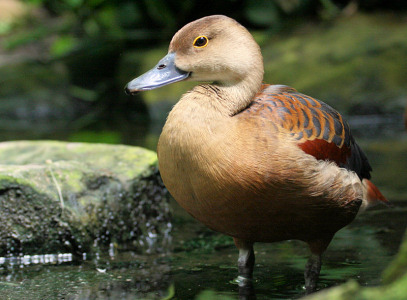 Lesser Whistling Duck (Dendrocygna Javanica) Photo: Dave Key |
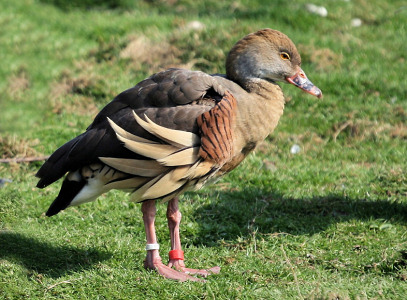 Plumed Whistling Duck (Dendrocygna Eytoni) Photo: Dave Key |
 African Black Duck (Anas Sparsa) Photo: Dave Key |
 American Black Duck (Anas Rubripes) Photo: Nigel Key |
 Bronze-winged Duck (Speculanas Specularis) Photo: Dave Key |
 Falcated Duck (Anas Falcata) Photo: Dave Key |
 Gadwall (Anas Strepera) Photo: Dave Key |
 Garganey (Anas Querquedula) Photo: Dave Key |
 Spot-billed Duck (Anas Poecilorhyncha) Photo: Dave Key |
 Laysan Duck (Anas Laysanensis) Photo: Nigel Key |
 Mallard (Anas Platyrhynchos) Photo: Dave Key |
 Mottled Duck (Anas Fulvigula) Photo: Wikimedia Commons |
 Pacific Black Duck (Anas Superciliosa) Photo: Dave Key |
Philippine Duck (Anas Luzonica) Photo: Dave Key |
 Northern Pintail (Anas Laysanensis) Photo: Dave Key |
 White-cheeked Pintail (Anas Bahamensis) Photo: Nigel Key |
 Australian Shoveler (Anas Rhynchotis) Photo: Dave Key |
 Cape Shoveler (Anas Smithii) photo by Neill Smith |
 Northern Shoveler (Anas Clypeata) Photo: Dave Key |
 Red Shoveler (Anas Platalea) Photo: Dave Key |
 Brown Teal (Anas Chlorotis) Photo: Wikimedia Commons |
 Baikal Teal (Anas Formosa) Photo: Dave Key |
 Blue-winged Teal (Anas Discors) Photo: Nigel Key |
 Cape Teal (Anas Capensis) Photo: Dave Key |
 Chestnut Teal (Anas Castanea) Photo: Nigel Key |
 Cinnamon Teal (Anas Cyanoptera) Photo: Dave Key |
 Grey Teal (Anas Gracilis) Photo: Wikimedia Commons |
 Bernier’s Teal (Anas Bernieri) Photo: Dave Key |
 Red-billed Teal (Anas Erythrorhyncha) Photo: Dave Key |
 Silver Teal (Anas Versicolor) Photo: Wikimedia Commons |
 Hottentot Teal (Anas Hottentota) Photo: Wikimedia Commons |
 Puna Teal (Anas Puna) Photo: Dave Key |
 Eurasian Teal (Anas Crecca) Photo: Dave Key |
 Green-winged Teal (Anas Carolinensis) Photo: Wikimedia Commons |
 Sharp-winged Teal (Anas Flavirostris Oxyptera) Pic: Wikimedia Commons |
 American Wigeon (Anas Americana) Photo: Dave Key |
 Chiloe Wigeon (Anas Sibilatrix) Photo: Dave Key |
 Eurasian Wigeon (Anas Penelope) Photo: Dave Key |
 Yellow-billed Duck (Anas Undulata) Photo: Dave Key |
 Canvasback (Aythya Valisineria) Photo: Dave Key |
 Ferruginous Duck (Aythya Nyroca) Photo: Dave Key |
 Hardhead (Aythya Australis) Photo: Dave Key |
 Marbled Duck (Marmaronetta Angustirostris) Photo: Dave Key |
 Common Pochard (Aythya Ferina) Photo: Nigel Key |
 Red-crested Pochard (Netta Rufina) Photo: Dave Key |
 Southern Pochard (Netta Erythrophthalma) Photo: Dave Key |
 Baer’s Pochard (Aythya Baeri) Photo: Dave Key |
 Madagascar Pochard (Aythya Innotata) Photo: Wikimedia Commons |
 Redhead (Aythya Americana) Photo: Dave Key |
 Ring-necked Duck (Aythya Collaris) Photo: Dave Key |
 Rosybill (Vetta Peposaca) Photo: Dave Key |
 Greater Scaup (Aythya Marila) photo by Dave Key |
 Lesser Scaup (Aythya Affinis) Photo: Dave Key |
 New Zealand Scaup (Aythya Novaeseelandiae) Photo: Wikimedia Commons |
 Tufted Duck (Aythya Fuligula) Photo: Dave Key |
 American Wood Duck (Aix Sponsa) Photo: Dave Key |
 Brazilian Duck (Amazonetta Brasiliensis) Photo: Dave Key |
 Mandarin (Aix Galericulata) Photo: Dave Key |
 Muscovy Duck (Cairina Moschata) Photo: Dave Key |
 African Pygmy Goose (Nettapus Auritus) Photo: Dave Key |
 Cotton Pygmy Goose (Nettapus Coromandelianus) Photo: Wikimedia Commons |
 Green Pygmy Goose (Nettapus Pulchellus) Photo: gillian_in_brussels and Animal Photos! |
 Hartlaub’s Duck (Pteronetta Hartlaubii) Photo: Wikimedia Commons |
 Ringed Teal (Callonetta Leucophrys) Photo: Dave Key |
 Australian Wood Duck (Chenonetta Jubata) Photo: Dave Key |
 Comb Duck (Sarkidiornis Melanotos) Photo: Dave Key |
 Maccoa Duck (Oxyura Maccoa) Photo: Dave Key |
 Ruddy Duck (Oxyura Jamaicensis) Photo: Dave Key |
 White-headed Duck (Oxyura Leucocephalia) Photo: Dave Key |
 Blue-billed Duck (Oxyura Australis) Photo: Wikimedia Commons |
 Lake Duck (Oxyura Vittata) Photo: Nigel Key |
 Musk Duck (Biziura Lobata) Photo: Wikimedia Commons |
 Bufflehead (Bucephala Albeola) Photo: Dave Key |
 Common Eider (Somateria Mollissima) Photo: Dave Key |
 King Eider (Somateria Spectabilis) Photo: zaskoda and Animal Photos! |
 Spectacled Eider (Somateria Fischeri) Photo: Wikimedia Commons |
 Steller’s Eider (Polysticta Stelleri) Photo: Wikimedia Commons |
 Barrow’s Goldeneye (Bucephala Islandica) Photo: Dave Key |
 Common Goldeneye (Bucephala Clangula) Photo: Dave Key |
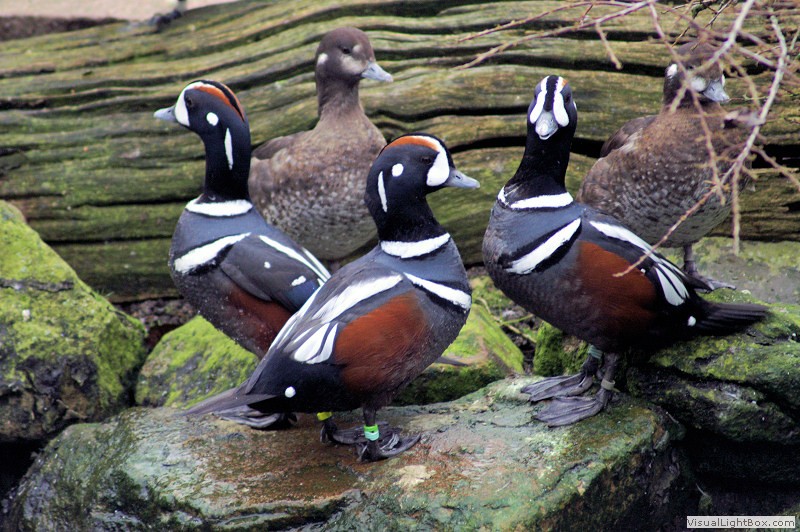 Harlequin Duck (Histrionicus Histrionicus) photo by Neill Smith |
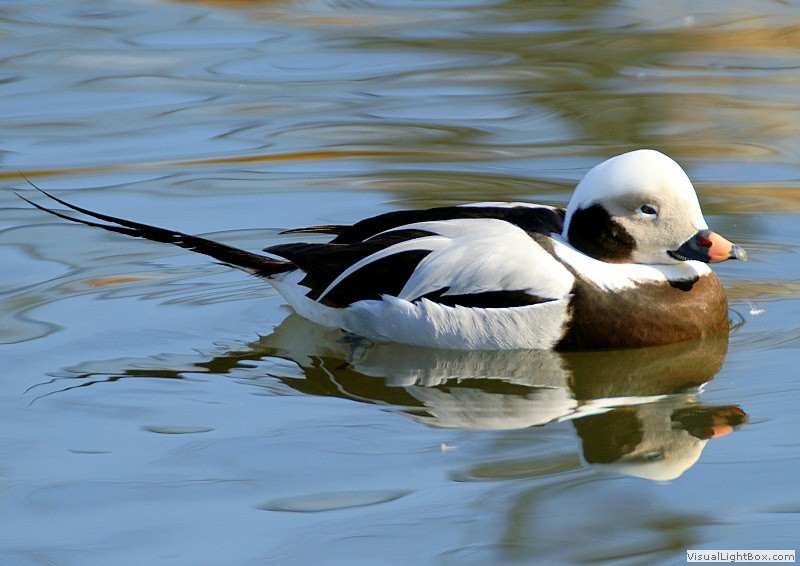 Long-tailed Duck (Clangula Hyemalis) photo by Neill Smith |
 Brazilian Merganser (Mergus Octosetaceus) Photo: Wikimedia Commons |
 Common Merganser (Mergus Merganser) Photo: Nigel Key |
 Hooded Merganser (Lophodytes Cucullatus) Photo: Dave Key |
 Red-breasted Merganser (Mergus Serrator) photo by Neill Smith |
 Scaly-sided Merganser (Mergus Squamatus) photo by Neill Smith |
 Black Scoter (Melanitta Americana) Photo: Wikimedia Commons |
 Common Scoter (Melanitta Nigra) photo by Neill Smith |
 Surf Scoter (Melanitta Perspicillata) Photo: mikebaird and Animal Photos! |
 Velvet Scoter (Melanitta Fusca) photo by Neill Smith |
 White-winged Scoter (Melanitta Deglandi) Photo: Wikimedia Commons |
 Smew (Mergellus Albellus) Photo: Dave Key |
 Australian Shelduck (Tadorna Tadornoides) Photo: Dave Key |
 Common Shelduck (Tadorna Tadorna) Photo: Dave Key |
 Paradise Shelduck (Tadorna Variegata) Photo: digitaltrails and Animal Photos! |
 Radjah Shelduck (Tadorna Radjah) Photo: Dave Key |
 Ruddy Shelduck (Tadorna Ferruginea) Photo: Dave Key |
 South African Shelduck (Tadorna Cana) Photo: Dave Key |
 Black-bellied Whistling Duck (Dendrocygna Autumnalis) Photo: Dave Key |
 Fulvous Whistling Duck (Dendrocygna Bicolor) Photo: Dave Key |
 Lesser Whistling Duck (Dendrocygna Javanica) Photo: Dave Key |
 Plumed Whistling Duck (Dendrocygna Eytoni) Photo: Dave Key |
If you are trying to identify a duck and can’t find it on this page then it may be a female or a male duck in eclipse plumage. It could also be a hybrid duck which is the offspring of two different duck species, which is quite rare.
It may also be a Domestic Duck which has escaped into the wild. They are quite a common sight in your local park. Most Domestic Ducks are descended from the wild Mallard and will also breed with them producing a hybrid Domestic Duck X Mallard (sometimes called a Manky Mallard, Feral or Domestic Mallard). These are also a fairly common sight and have a similar shape to a Mallard but are usually a bit larger with various coloured plumages.
Feral Domestic Muscovy Ducks are also fairly common in the wild in parts of the UK, Europe, USA and Australasia etc. They are large ducks which resemble the wild Muscovy duck (see photo above) but have a varied black and white or brown and White plumage.
If you have seen and photographed a Duck, Goose, or Swan and are struggling to identify it then you can email a photograph to us and we will do our best to identify it for you.
You can also post your wildfowl photos on our Facebook page to show them or ask for them to be identified.
 Mallard in Eclipse Dave Key |
 Hybrid Duck Dave Key |
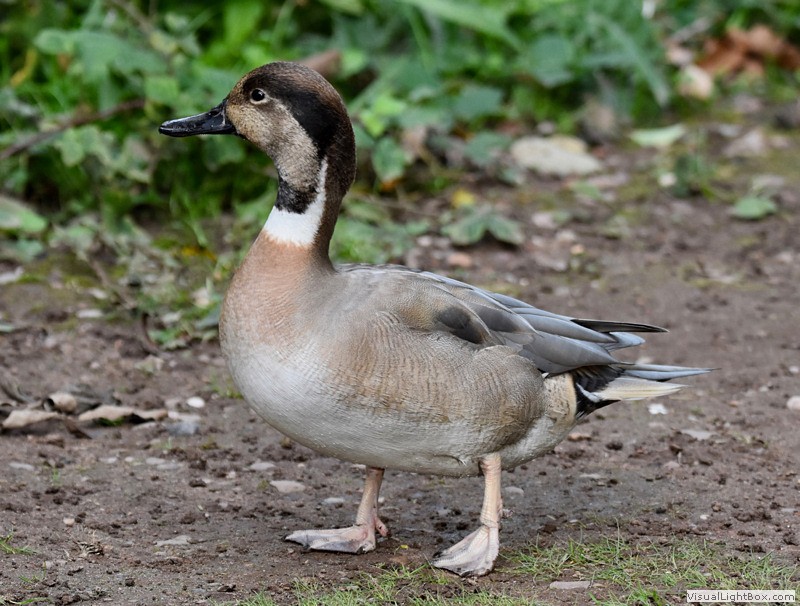 Hybrid Duck Carol Gillen |
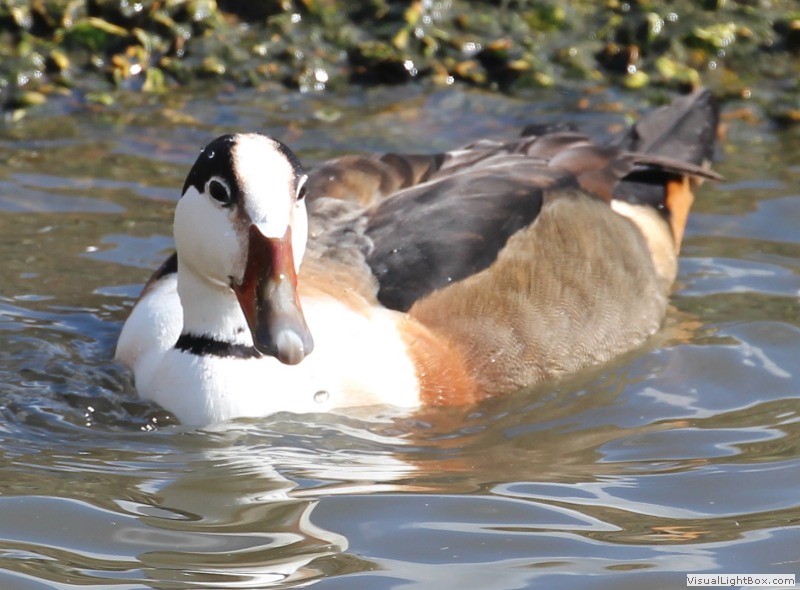 Hybrid Duck Michelle |
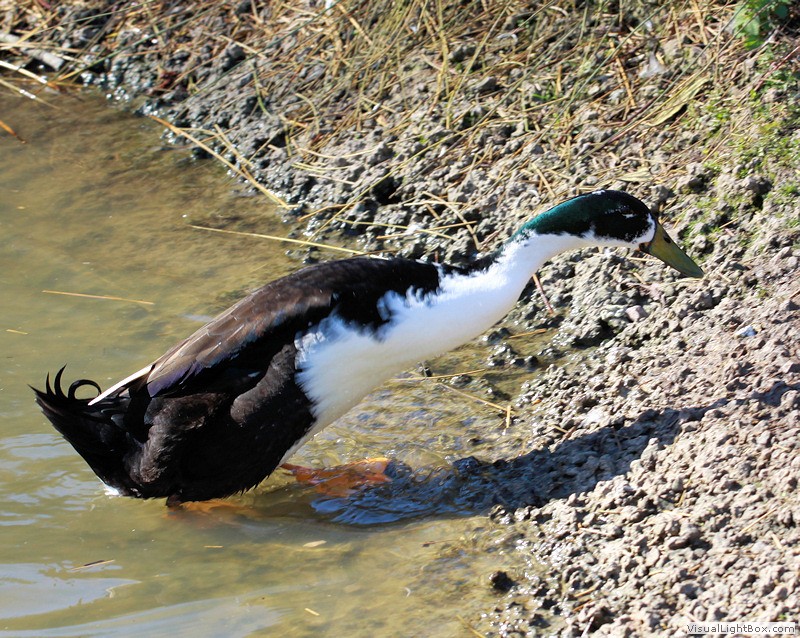 Indian Runner Duck Dave Key |
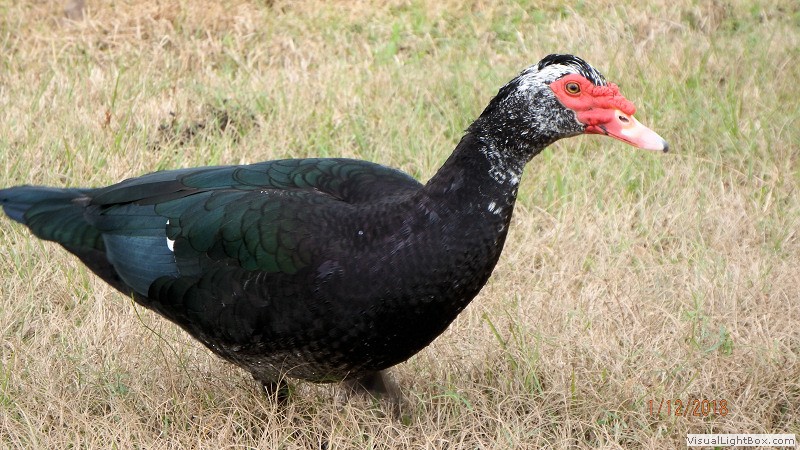 Domestic Muscovy Duck Bill Haley |
 Mallard in Eclipse Dave Key |
 Hybrid Duck Dave Key |
 Hybrid Duck Carol Gillen |
 Domestic Cayuga Duck Wiki Commons |
 Indian Runner Duck Dave Key |
 Domestic Muscovy Duck Bill Haley |
19 Types of Ducks: Facts and Photos

Welcome to our article listing the many types of ducks! These birds might be common, but they are diverse, with peculiar traits that will surely interest you. Our journey will show us their characteristics, behaviors, and habitats. We’ll also explore their dietary preferences and share a few facts, such as that not all ducks quack! This exploration aims to deepen our understanding of our planet’s biodiversity. What new information will we uncover? Let’s find out! Related Read: Duck Facts, Bird Facts.
3 Types of Ducks: Perching, Dabbling, and Diving
Ducks belong to the Anatidae family and are categorized as waterfowl. There are three major groups of wild ducks: perching, dabbling, and diving. Perching ducks, as their name indicates, can climb and hang out in high trees. On the other hand, dabbling ducks or puddle ducks stay on the water’s surface to feed, while diving ducks swoop into the water’s depths to look for food. Get to know each duck for each category in the list below. Quick links to the different types of ducks:
- 1. Mandarin Duck
- 2. Muscovy Duck
- 3. Wood Duck
- 4. Cotton Pygmy Goose
- 5. Mallard
- 6. Northern shoveler
- 7. Swedish Blue Duck
- 8. Teal Duck
- 9. American Black Duck
- 10. Northern Pintail
- 11. Blue-winged Teal
- 12. Redhead Duck
- 13. Red-breasted Merganser
- 14. Harlequin Duck
Perching Ducks
1. Mandarin Duck (Aix galericulata)

The first type of duck in this list is the Mandarin duck, which lives in dense woodlands and water bodies. These waterfowl prefer shrubby forests near shallow lakes, marshes, or ponds. When nesting, they choose tree cavities high above the ground, off the reach of terrestrial predators.
The male Mandarin Duck blends deep orange, purple, green, and white. They also have giant white crescents over their eyes, while their reddish faces have “whiskers.” Likewise, their purple breast has two white bars. Meanwhile, female mandarin ducks have gray heads, brown backs, mottled flanks, white eye rings, and stripes stretching backward.
2. Muscovy Duck (Cairina moschata)

Fun Fact: Did you know that the Muscovy duck is not a true duck? This perching duck species is native to Central and South America. Unlike other ducks, the Muscovy duck has a fleshy red face, a bumpy caruncle on its bill, and sharp claws on its feet.
Noticeably larger than their female counterparts, males also have caruncles or red wart-like outgrowths on their bills. Their claws are also sharp enough to help them roost in trees. Finally, they prefer to live in wet woodlands and marshes, where trees provide refuge from predators.
3. Wood Duck (Aix sponsa)

Male wood ducks are among North America’s most colorful waterfowl species. Drakes have iridescent feathers of various colors, red eyes, and a white flare running down their necks. They also have a green-crested head.
In the 19th century, wood duck populations were seriously declining thanks to habitat loss and market hunting. Hunters targeted them for their meat and feathers, which were in high demand for the European ladies’ hat market. They had almost disappeared in several areas in the 20th century. Fortunately, their populations rebounded after the enactment of the 1916 Migratory Bird Treaty and the US Migratory Bird Treaty Act of 1918.
4. Cotton Pygmy Goose (Nettapus coromandelianus)

Fun Fact: Did you know that the Cotton Pygmy Goose is one of the smallest ducks in the world? Despite their size, they can glide swiftly across the water.
The cotton pygmy goose, or cotton teal, is an agile flyer that lives in the waterways of Asia and northern Australia. Males have white faces with black caps, while females have brown feathers.
Dabbling Ducks
5. Mallard (Anas platyrhynchos)

Fun Fact: Did you know almost all domestic duck breeds descended from the Mallard ducks?
Undoubtedly, this type of duck is familiar to everyone. The male mallard ducks have vibrant green feathers and yellow bills. Meanwhile, the females have mottled brown feathers and an orange-brown bill. While foraging, mallards tip forward to fish for a meal, including aquatic plants, insects, and small mollusks.
6. Northern shoveler (Spatula clypeata)

Fun Fact: Did you know that the Northern shoveler has a long, broad bill that looks like a shovel? The Northern shoveler’s bill has over 100 tiny bristle-like notches that filter out small invertebrates, crustaceans, and plant matter from the water, making it an expert at feeding on aquatic vegetation.
Northern shovelers sweep their giant bills across the water in shallow marshlands, wet grasslands, and flooded fields, scooping up aquatic invertebrates and plant matter.
7. Swedish Blue Duck (Anas platyrhynchos domesticus)

Fun Fact: Did you know the Swedish Blue Duck is not blue? Despite its name, this duck breed does not have blue feathers. Instead, it has a silver-gray plumage.
Discovered in the picturesque landscapes of Sweden in the 19th century, the Swedish Blue Duck has adapted to various climates. These domestic ducks have a colorful appearance and hardy nature, which appeal to hobbyists and small-scale farmers. Moreover, this duck weighs six to eight pounds, much heavier than others. Yet, they are calm and friendly, a favorite among novice duck breeders.
8. Teal Duck (Anas crecca)

Fun Fact: Did you know that the Teal Duck is one of the world’s smallest and fastest dabbling ducks? This little bird can reach up to 60 miles per hour despite its size.
Male teal ducks have chestnut-colored heads and green eye patches, while females have mottled brown feathers. Moreover, they are migratory birds that travel south during the winter; during the breeding season, they stay in the northernmost regions of North America, Europe, and Asia.
9. American Black Duck (Anas rubripes)

The American Black Duck lives in the Eastern North American wetlands. Under their dark brown plumage is a light-colored underbelly. Their wings are purplish blue, known to bird enthusiasts as the speculum. These ducks gather in flocks during the breeding season. Moreover, they are fiercely territorial, protecting their abode and young.
They can blend in with their surroundings, making them almost invisible to predators. Their dark brown feathers with mottled patterns help them hide in wetlands and marshes.
10. Northern Pintail (Anas acuta)

Fun Fact: Did you know that the Northern Pintail is often called the “greyhound of the air?” This duck species has brown heads, long and slender necks, and pointed tail feathers, which give them a streamlined appearance.
The Northern Pintail lives across North America, Europe, and Asia, favoring open marshes, vast lakes, and tranquil ponds. An adult male has a dark brown head, a white neck, and a gray body. On the other hand, the female has mottled brown plumage designed for camouflage.
11. Blue-winged Teal (Spatula discors)

Blue-winged teal has several natural predators, including humans, snapping turtles, dogs, cats, muskellunge, snakes, magpies, and badgers, among others. This elegant type of duck has a grayish-blue head and a white facial crescent for males. They also have light brown bodies with white patches near their black tails. On the other hand, blue-winged teal females are mottled brown with a white area at their bills’ base.
Diving Ducks
12. Redhead Duck (Aythya americana)

Fun Fact: Did you know that the Redhead duck gets its name from its red head? However, the male’s red head fades outside of the breeding season when it turns a dull brown.
The male redhead duck has a rufous-tinted head and neck against a gray body, outshining the female’s brown feathers. Moreover, they have blue bills with black tips designed to hunt prey in the water. This diving type of duck lives in marshes and coastal bays but migrates to warmer places in the winter, particularly the Great Plains, the Western United States, the Gulf of Mexico, and the Atlantic coast.
13. Red-breasted Merganser (Mergus serrator)

Fun Fact: Did you know the red-breasted merganser can dive underwater? Their long, slender bodies and serrated bills are built for speed and precision in the water. Moreover, they can dive up to 300 times per day to meet their energy needs.
The red-breasted merganser has stunning red-brown plumage and a shimmering green crown. It lives in northern Europe, North America, and Asia. Moreover, its long serrated bill helps it grasp slippery prey like fish. Besides fish, these ducks eat crustaceans, insects, and other small aquatic creatures. They can also fly up to 80 miles per hour.
14. Harlequin Duck (Histrionicus histrionicus)

Fun Fact: Did you know that the Harlequin Duck are extremely social birds? Males, failed females, and nonbreeding females form clubs after breeding seasons 2 .
These marine birds have dark blue bodies with white and chestnut streaks on their sides. On the other hand, females have brown and gray feathers and small white patches near their eyes. They eat marine insects, small fish, and fish eggs.
15. Ruddy duck (Oxyura jamaicensis)

Fun Fact: Did you know that ruddy ducks are invasive species in Europe after being imported to the United Kingdom in the 1950s 1 ? The ruddy duck established populations in Britain before spreading across Europe in the 1950s. Moreover, these ducks perform aggressive courting behaviors. They are even ready to interbreed with endangered species like the white-headed duck, threatening their population.
These ducks are small birds with scoop-shaped bills, and stiff tails held upward. Males change color depending on the season. During summer, they have blackish caps with white cheeks. In the winter, they turn gray-brown with dull gray bills.
16. Greater Scaup (Aythya marila)

Fun Fact: Did you know the Greater Scaup can dive up to 20 feet underwater? Their diet includes mollusks, crustaceans, and aquatic plants.
The Greater Scaup lives on coastal bays and estuaries, occasionally dropping by a tundra pond. They also prefer saltwater because their food lives in the seas and oceans. Male greater scaups have black heads, necks, and breasts, while females are lighter brown. However, males and females have bright yellow eyes.
17. Lesser Scaup (Aythya affinis)

Fun Fact: Did you know the Lesser Scaup can dive up to 20 feet underwater? Their streamlined bodies and webbed feet help them stay submerged for several seconds. Underwater, they hunt for shellfish, water plants, and aquatic bugs.
The lesser scaup is one of North America’s most common diving ducks. Males have glossy black heads and necks, offsetting their white underside. Likewise, their grayish-blue bills have black tips, adding some contrast. On the other hand, females have brown bodies with a white band around their bill. These ducks also have a little “bump” at the back of their heads.
18. White-winged Scoter (Melanitta fusca)

Fun Fact: Did you know that the white-winged scoter can plunge as deep as 65 feet underwater to look for mollusks and crustaceans? Thanks to their strong wings and streamlined bodies, white-winged Scoters can stay submerged for up to a minute.
These sea ducks are the biggest scoter species in North America, preferring Alaska and Canada. Their bodies are black, save for the white flash on their wings that appears when they fly. Moreover, the males have bright orange-yellow bills with distinctive knobs. During the winter, the white-winged scoter travels to the coastal areas of the United States.
19. Common Eider (Somateria mollissima)

Fun Fact: Did you know the Common Eider lines her nest with soft down feathers plucked from her breast? Her feathers keep the eggs warm and provide a comfortable environment for the ducklings.
The final types of duck in this category are the common eiders that live across Europe, North America, and even as far as eastern Siberia. One can identify them by their weird wedge-shaped bills. However, the males have black ad white feathers with a dash of green on the nape, while females are brown and black. Moreover, these ducks can dive 20 meters deep into the ocean, looking for mussels, clams, and other tiny animals. Thanks to their powerful gizzard, they can crush and digest hard shells.
Conclusion: Types of Ducks
Did you learn a lot about these birds? Knowing that ducks come in different colors and discovering they can not only fly but dive, you are more excited to visit your nearest marshes and ponds. So once you go to one, gear up with your binoculars and don’t miss out on watching these birds in the wild.

Robertson, P. A., Adriaens, T., Caizergues, A., Cranswick, P. A., Devos, K., Gutiérrez-Expósito, C., Henderson, I., Hughes, B., Mill, A. C., and Smith, G. C. (2014). Towards the European eradication of the North American ruddy duck. Biological Invasions, 17(1), 9–12.
Robertson, G. J. and R. I. Goudie (2020). Harlequin Duck (Histrionicus histrionicus), version 1.0. In Birds of the World (S. M. Billerman, Editor). Cornell Lab of Ornithology, Ithaca, NY, USA.
Mike is a degree-qualified researcher and writer passionate about increasing global awareness about climate change and encouraging people to act collectively in resolving these issues.